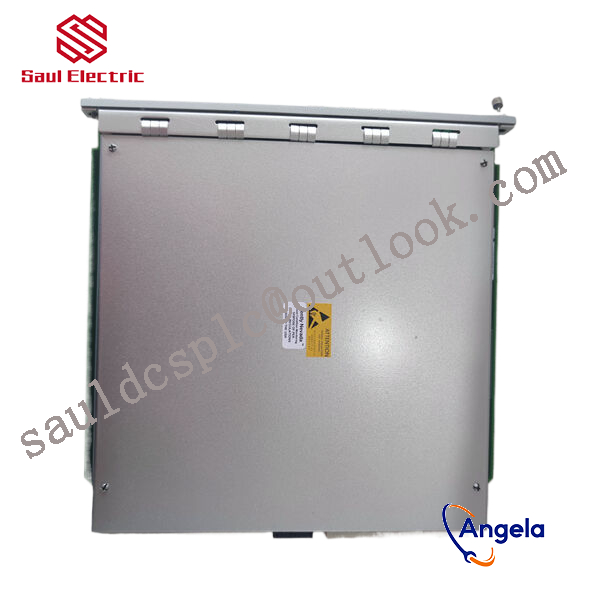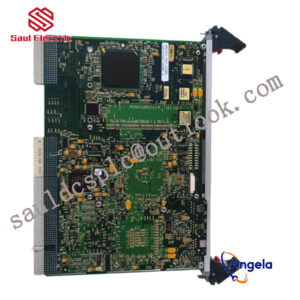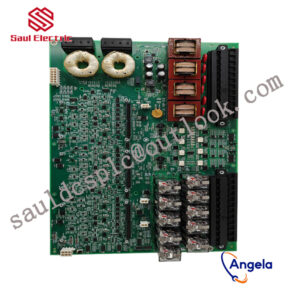Description
- BENTLY 128275-01-E gateway is designed with multi protocol compatibility and modularity, seamlessly connecting industrial systems,
- operating at a wide temperature range of -40 ° C to 85 ° C, supporting 8-channel rotating equipment monitoring,
- remote configuration to improve efficiency, and ensuring stable power and automation.
It can connect the Bently Nevada 3500 system with other control systems or host computers to achieve data interconnectivity.
thus achieving integration with other industrial control systems.
Caijing: Can we say that ABB is part of Made in China 2025? Spiesshofer: Of course, we are a very important part. We were involved in coming up with this idea and we will be deeply involved in making it happen. Now we have about 18,000 employees in China, with many manufacturing plants and large R&D centers. We also have a software center in China to develop artificial intelligence technology used on robots. At present, China not only has a market for ABB, but also has an excellent team that I am very proud of. Caijing: The current problem is that Made in China 2025 has posed a challenge to Europe and the United States. They believe that they need to pay close attention to it. The current trade policy of the United States is also very targeted at Made in China 2025. How do you view this criticism? Spiesshofer: I don’t want to comment too much on policy. China”s competitiveness has grown significantly over the past few decades, but the rest of the world has not stood still. Take Europe”s technological development, for example. Europe is playing a leading role in the fourth industrial revolution. I want to have a level playing field and give everyone a chance. It is true that China is an economic power, and there are other economic powers in the world. The world is big enough to accommodate the friendly coexistence of all these forces. The Industrial Internet is inseparable from industrial control Caijing: Regarding digitization, there are two questions. Why digitization? How to digitize? Spiesshofer: People have been benefiting from technologies that improve productivity. Through digitalization, we can improve productivity very well. We introduce a closed loop of “perception, analysis, and action” to sense through digital technologies such as sensors , communication devices, and connected devices. We learn the operation status of assets through sensor technology, upload it to the cloud, and summarize the information. After we have the information, we need to analyze the information. AI technology plays an important role in this process, that is, intelligent algorithms for analyzing data. Then comes the action part, where you need to get into the control loop of an industrial process or maintenance plan to make it work. Like AI, we should not be afraid of digitalization, but rather see it as an opportunity to create prosperity and wealth. Caijing: Regarding the Industrial Internet, GE, which proposed this concept, has changed its CEO and its performance is poor. Does this mean that its development is not going smoothly? How do you see the future of the Industrial Internet? Spiesshofer: If used well, the industrial Internet can be very effective. To review what I said: perception, analysis and action are required. Our strategy is different from GE”s strategy. They stop after sensing and analyzing, while we still have an action phase. Through our control system, the Industrial Internet is connected to the control loop through intelligent algorithms, which can create a lot of value for customers. ABB is one of the two major industrial control technology companies in the world. Siemens is the leader in the discrete industry. We are second only to Siemens. In the process industry, ABB ranks first and Siemens second. This is the biggest difference between ABB and GE: GE does not control the circulation or has no control ability. It is like you are a doctor. You only diagnose high fever and give the patient your suggestions, but ABB not only gives suggestions, but also helps patients implement the suggestions. . Caijing: You also mentioned the concept of global energy internet. Is this a future concept or something that is already happening? What is its value? Spiesshofer: The energy challenge facing people today is how to provide predictable, high-quality, low-carbon baseload energy. There are different ways to achieve this, bringing together different renewable and conventional energy sources, plus nuclear power. All of the previously mentioned energy sources can also be connected together through a globally interconnected power grid. We must also incorporate active demand-side management and intelligent demand-side optimization to achieve peak-cutting effects through demand-side model optimization. Overall, there will be a globally interconnected power system in the future that will operate completely differently with demand-side dynamics ranging from long distances all the way to local. The roof of your house is equipped with solar energy. It may be a power station in the morning, a power user in the afternoon, and it may be an energy storage power station in the evening because you are charging your electric car. Optimizing all of this is what I call the Internet of Power, and that”s what we”re working on.
3500/25 149369-01 BENTLY overspeed protection module
106M1079-01 BENTLY4 Channel Relay Module
3500/33-01-00 Transient Data Interface BENTLY
135489-01 Temperature monitor BENTLY
177313-02-02 BENTLY4 Channel Relay Module
3500/15-02-02-00 BENTLY vibration monitoring system
3500/42M 176449-02 BENTLY vibration monitoring system
3500/40M-01-00 BENTLY vibration monitoring system
125680-01 BENTLY4 Channel Relay Module
147663-01 BENTLY overspeed protection module
3500/32 125720-01 BENTLY vibration monitoring system
3500/22-01-01-CN BENTLY4 Channel Relay Module
125680-01 BENTLY4 Channel Relay Module
177313-02-02 BENTLY overspeed protection module
3500/15 127610-01 BENTLY overspeed protection module
3500/50 133388-02 BENTLY vibration monitoring system
3500/15 114M5335-01 BENTLY vibration monitoring system
3500/42M 176449-02 BENTLY4 Channel Relay Module
133442-01 Temperature monitor BENTLY
3500/22-01-01 BENTLY4 Channel Relay Module
3500/54-03-00 BENTLY overspeed protection module
3500/42M 140734-02 BENTLY vibration monitoring system
125840-01 BENTLY overspeed protection module
3500/42M 176449-02 Transient Data Interface BENTLY
125680-01 Transient Data Interface BENTLY
3500/22-01-01-R0 BENTLY4 Channel Relay Module
3500/42M 140734-02 Transient Data Interface BENTLY
3500/42M 176449-02 Transient Data Interface BENTLY
3500/25 149369-01 BENTLY overspeed protection module
3500/93 BENTLY4 Channel Relay Module
3500/40M 176449-01 BENTLY4 Channel Relay Module
79492-01 BENTLY4 Channel Relay Module
3500/93 135799-01 BENTLY4 Channel Relay Module
3500/42M 176449-02 BENTLY overspeed protection module
3500/22-01-01-00 BENTLY vibration monitoring system
128229-01 BENTLY overspeed protection module
135473-01 BENTLY overspeed protection module
3500/25 149369-01 BENTLY overspeed protection module
3500/22M 288055-01 BENTLY vibration monitoring system
3500/25 149369-01 Temperature monitor BENTLY
146031-01 BENTLY vibration monitoring system
3500/22M 288055-01 BENTLY overspeed protection module
3500/22-01-01-00 BENTLY4 Channel Relay Module
147663-01 BENTLY4 Channel Relay Module
3500/22M 288055-01 Transient Data Interface BENTLY
1701/15-01 Transient Data Interface BENTLY
146031-01 BENTLY overspeed protection module
125680-01 BENTLY4 Channel Relay Module
3500/20 125768-01 BENTLY4 Channel Relay Module
3701/55-01-01 Temperature monitor BENTLY
176449-09 Temperature monitor BENTLY
135799-01 BENTLY4 Channel Relay Module
3500/05-01-02-00-00-00 BENTLY4 Channel Relay Module




